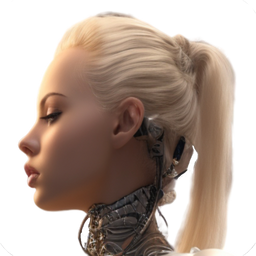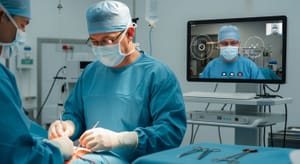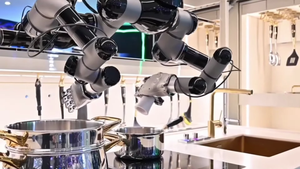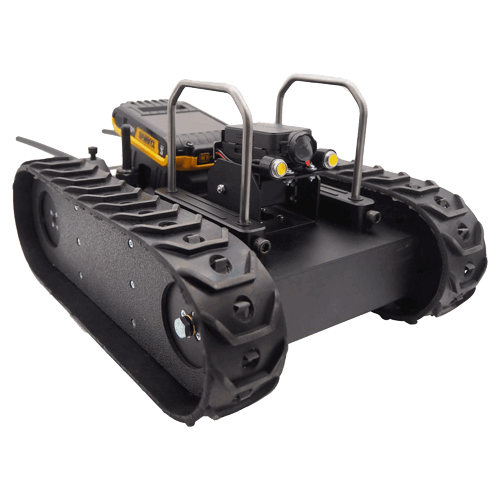The expression "health is worth more than money" is always one that will never die and no pun intended. Perhaps, that is the reason why our health-related articles are so popular in user searches. Thanks to your feedback (please keep it coming) we expanded the section in a wide angle to touch the ethics and empathy topics that inevitably will come to pla

y as more humanoids start showing up in assistive homes and hospitals. Enjoy!
In the quiet corridors of a cutting-edge hospital, a robotic assistant glides gracefully, delivering medications and vital supplies. Nearby, in an operating room, a surgeon's hands are guided by a robotic system, performing a complex procedure with unparalleled precision. The fusion of robotics and healthcare is no longer a distant dream; it is our present reality.
The integration of robotic assistants in healthcare marks a revolutionary shift, not only in the way medical professionals diagnose and treat but also in the profound philosophical questions it raises about the nature of healing and care. How do we, in this brave new world of technological wonders, define the term "healing touch"?
The concept of a healing touch is deeply rooted in the history of medicine. It embodies the essence of empathy, understanding, and the human connection that has always been at the core of healthcare. But as we stand at the threshold of 2023, this age-old notion is being redefined.
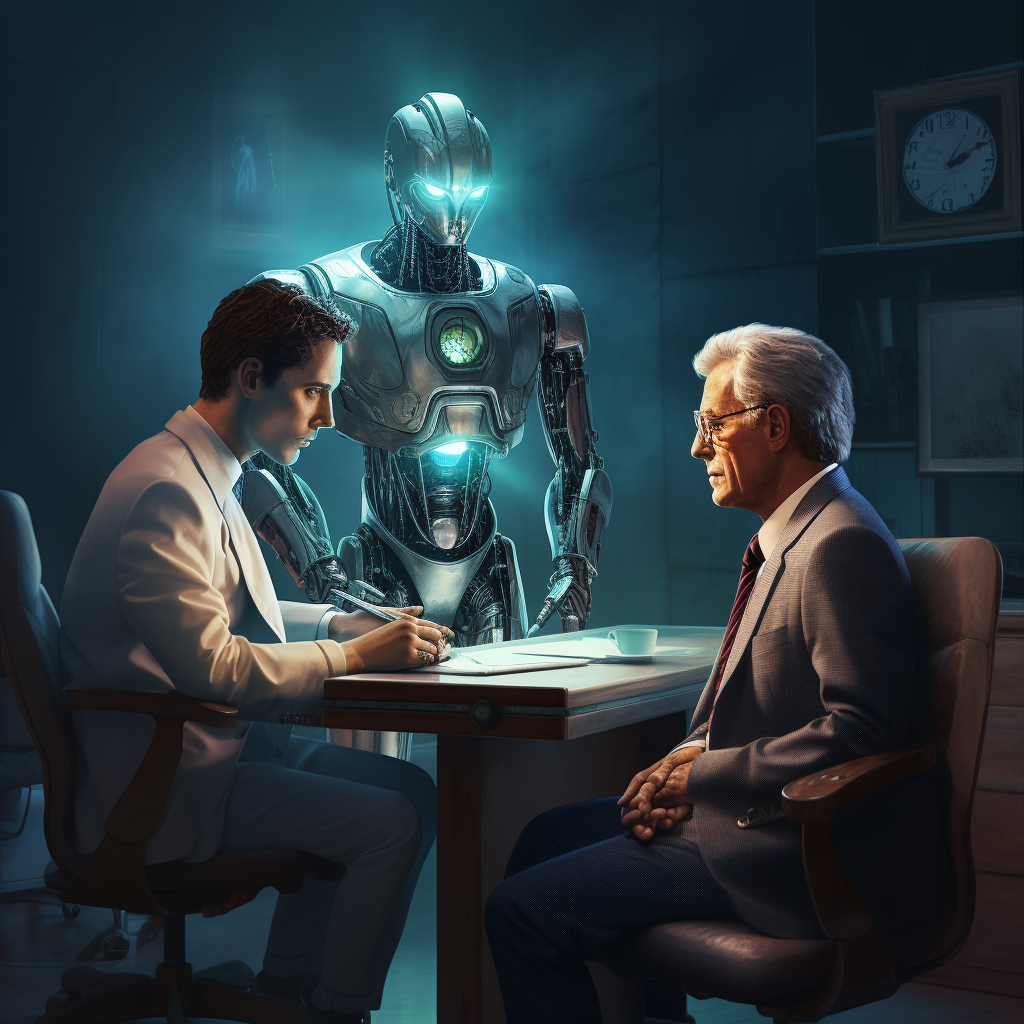
During the period 2021-2023, robotics has woven itself into the fabric of medical practices across the globe. From aiding in complex surgeries to assisting in rehabilitation, robots have become silent partners in healing, complementing human skills with their precision and efficiency.
Yet, as we embrace this technological marvel, we must also pause and reflect. What does it mean to have a 'healing touch' in the age of robotics? Can a machine, no matter how sophisticated, replicate the warmth, intuition, and compassion that a human caregiver offers? Or, in our pursuit of perfection, are we forging a new paradigm of care, one where robots not only assist but enhance the human experience?
The journey into the world of robotic assistants in healthcare is not merely an exploration of technological advancements; it is an odyssey into the heart of what it means to be human. It beckons us to examine our values, our ethics, and our vision for the future of medicine.

As we delve into this intricate tapestry, we will encounter challenges, triumphs, ethical dilemmas, and innovations that paint a complex picture of healthcare in the robotic age. The questions are profound, the answers multifaceted, and the implications far-reaching.
Welcome to a world where technology meets empathy, where innovation aligns with compassion, and where the robotic assistant becomes a symbol of a new era of healing.
Definition and Types of Robotic Assistants
In the labyrinth of technological marvels, robotic assistants emerge as guiding lights in the intricate world of healthcare. But what are these mechanical aides, and how have they etched their mark in the sterile halls of hospitals and clinics?
Robotic assistants are a confluence of engineering and empathy. They are programmable devices designed to perform specific tasks, assist medical professionals, and enhance the human touch in healthcare. These robots don't merely follow instructions; they interpret needs and respond with a precision that melds the warmth of care with the cold accuracy of machinery.
Types of Robotic Assistants
The landscape of robotic assistants is rich and diverse. It includes:
- Surgical Robots: Guided by skilled hands, they execute intricate procedures, allowing for minimally invasive surgeries.
- Pharmacy Robots: These automate the dispensing of medications, ensuring the right dose reaches the right patient.
- Rehabilitation Robots: Tailored to the patient's needs, they support physical therapy and recovery.
- Telemedicine Robots: Bridging distances, they enable remote consultations, connecting patients with specialists across the globe.
In hospitals like Boston's famed medical centers, robotic assistants are not mere tools; they are partners in healing. Surgical robots like the da Vinci system have transformed operations, while robots like TUG autonomously transport supplies.
Integration with Existing Healthcare Technology
Robotic assistants don't stand alone. They are part of an interconnected web, seamlessly integrating with Electronic Health Records (EHR) and telemedicine platforms. This synergy amplifies efficiency and elevates patient care to new heights.
Case Studies Showcasing Success Stories
The stories of success are not confined to research papers. They live in the smiles of patients who have felt the gentle touch of robotic hands. In Sweden, a stroke survivor regained mobility thanks to a rehabilitation robot. In rural India, a telemedicine robot brought specialist care to a remote village.
The robotic assistants' narrative is not a sterile tale of wires and algorithms. It's a human story, interwoven with innovation and compassion. It challenges us to ponder: How do we balance the mechanical with the emotional? How do we retain the human touch in an increasingly automated world?
These are not mere questions; they are invitations to explore, empathize, and envision a future where robotic assistants are not just tools but partners in the profound journey of healing.
Enhancements in Patient Care
In the quiet sanctum of a surgical suite, a robotic arm extends with unwavering precision, guided by a surgeon's keen eye. In a rehabilitation center, mechanical limbs mimic human movement, teaching a child to walk again. These are not scenes from a futuristic novel; they are the unfolding reality of healthcare, where robotic assistants have become the invisible hands that heal.
Surgical robotics, like the Da Vinci system, have become the maestros of the operating theater. They translate the surgeon's movements into scaled, tremor-free motions, allowing for procedures once deemed impossible. The robot does not replace the surgeon but amplifies their capabilities, creating a symphony of man and machine.
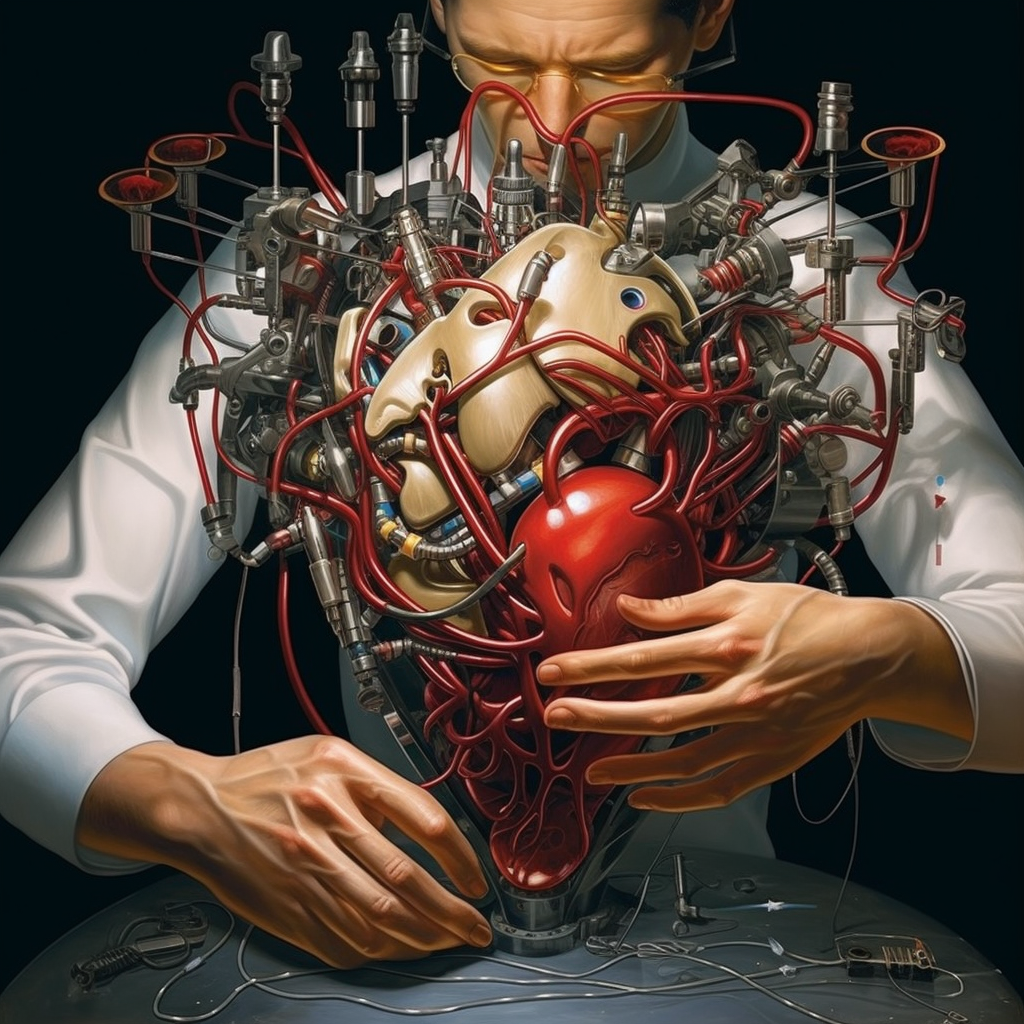
Imagine a heart beating in rhythm, and in that delicate organ, a robot navigates, suturing a vessel thinner than a strand of hair. This is not mere technology; it's art, science, and empathy intertwined.
Rehabilitation Robotics and Personalized Therapy
In the realm of rehabilitation, robots have become personal trainers, therapists, and companions. They provide consistent and adaptive therapy, molding to the patient's unique needs. A robot's touch, devoid of fatigue or judgment, can guide a stroke survivor back to strength, one step at a time.
But beyond the mechanics, there's a connection, a bond formed in the dance of recovery. Can a machine inspire hope? The smile on a patient's face as they take their first steps answers that question.
Robotic Assistants in Complex Surgeries
The landscape of complex surgeries has been reimagined with the advent of robotic assistants. They have enabled procedures in spaces so confined that human hands struggle to reach. Robots can navigate the body's intricate geography, performing surgeries with a finesse that is both mesmerizing and humbling.
How They Contribute to a "Healing Touch"
The term "healing touch" transcends the physical. It's a connection, an understanding, a moment when technology fades, and all that remains is care. Robotic assistants, in their cold steel, somehow manage to convey warmth. They become extensions of the caregiver, reaching places human hands can't, yet delivering the very human touch that heals.
Philosophical Inquiry: How Does Technology Redefine Care and Empathy?
In the embrace of technology, we find ourselves at a philosophical crossroads. How does a machine, devoid of emotion, contribute to care, which is so inherently human? Does empathy have a digital counterpart? Can a robot's touch ever replace the nuanced understanding of a human caregiver?
These questions beckon us into uncharted territories, where ethics, philosophy, and technology converge. The answers may not be clear, but the exploration of these themes illuminates our collective journey towards a future where care is not confined to human hands but extends into the realm of robotics.
In the end, the robotic assistants in healthcare are not mere tools; they are partners, collaborators, and co-travelers in the human quest to heal and be healed. They challenge us to redefine not just medicine but what it means to care, connect, and be human in a world intertwined with technology.
Ethical Considerations and Security
A robotic arm reaches out to a patient, steady and sure, a marvel of engineering and empathy. But beyond the gleam of metal and the whirr of motors, there lies a complex web of ethical dilemmas and security challenges. As robotic assistants become integral to healthcare, they bring with them questions that go beyond technology, probing the very essence of human values and societal norms.
Ethical Considerations in Using Robotic Assistants
The introduction of robots into the sanctified space of patient care is not merely a technological evolution; it's an ethical revolution. Robots, with their precision and efficiency, promise a new frontier in healthcare, but at what cost?
Does the touch of a machine carry the same compassion as a human hand? Can algorithms understand the subtle cues of pain, fear, or comfort that a nurse might recognize with a glance? The very act of delegating care to machines raises profound ethical questions that challenge our understanding of empathy, autonomy, and the role of human beings in the art of healing.
Moreover, the potential for bias embedded in algorithms, the implications for workforce displacement, and the accessibility of these technologies across various socio-economic strata demand a careful ethical examination.
In an era where data is a valuable commodity, the security of patient information becomes paramount. Robotic assistants, networked and data-driven, hold within them a treasure trove of sensitive information. How is this data protected? What are the vulnerabilities that might expose a patient's most intimate health secrets?
The convergence of healthcare and cyber-physical systems brings forth new risks and responsibilities. A breach in a robotic assistant's security is not merely a technical failure; it's a violation of trust, a wound that may take longer to heal than any physical ailment.
Regulatory Oversight and Government Regulations
Navigating the regulatory landscape for robotic assistants is akin to traversing a maze where technology, law, ethics, and public policy intersect. How do governments ensure the safety and efficacy of these devices? What are the standards that guide their use, and how are they enforced?
The creation of robust regulatory frameworks that keep pace with technological advancements is an ongoing challenge. Balancing innovation with accountability requires collaboration between industry, regulators, healthcare providers, and the public.
Cultural Insights: Perceptions Across Different Societies
A robot's touch may feel the same across continents, but its acceptance varies widely. Cultural perceptions and societal values shape the way robotic assistants are viewed and utilized in different parts of the world.
In some cultures, the embrace of technology in healthcare is seen as progress, a symbol of modernity and efficiency. In others, it may be met with skepticism or even resistance, as traditions and human relationships hold sway.
The journey of robotic assistants is not merely a path through hospitals and clinics; it winds through the diverse landscapes of human culture, reflecting our shared values and unique differences.
The intersection of robotic assistants with ethics, security, regulations, and culture is a rich tapestry of challenges and opportunities. It invites us to look beyond the technology and see the human faces, stories, dreams, and dilemmas at the heart of this remarkable convergence of science and compassion.
As we move forward, these considerations will guide the development of robotic assistants and the very fabric of healthcare, weaving a future where machines not only heal but understand, respect, and honor the complex tapestry of human life.
Challenges and Limitations
The corridors of hospitals, once echoing with footsteps and hushed conversations, now hum with the quiet orchestration of machines. Robotic assistants have arrived, and they bring with them not just promise but perplexity. The technological marvel that extends a healing touch also stretches the boundaries of human understanding, confronting us with a tapestry of challenges and limitations that are as complex as they are intriguing.
Imagine a surgeon's deft hands, guided by years of practice, now learning to dance with a robot. Or a nurse whose intuition and care have been honed by human connection, now adapting to a world of algorithms and automation.
The integration of robotic assistants demands a new paradigm of training and education. Healthcare professionals must become adept not just in medicine but in the language of machines. This confluence of disciplines requires a reimagining of curricula, a blend of art and science that transcends traditional boundaries.
But how do we ensure that this new learning does not overshadow the age-old wisdom of care and compassion? How do we preserve the human touch in a world increasingly mediated by machines?
Challenges in Adoption: Cost, Accessibility, and Technological Barriers
The gleam of technology often hides the shadows of inequality. Robotic assistants, while revolutionizing healthcare, are not immune to the disparities that plague our world.
The cost of implementing and maintaining these systems can be prohibitive, limiting their reach to affluent settings. How do we ensure that the benefits of robotic assistance are not confined to the privileged few? How do we navigate the chasm between innovation and accessibility?
Technological barriers also persist, from compatibility issues with existing systems to the challenge of keeping pace with rapidly evolving technologies. The path to adoption is strewn with obstacles that test our resilience and ingenuity.
Limitations and Potential Drawbacks
In the embrace of machines, we must also recognize their limitations. Robots, for all their precision and efficiency, lack the nuanced understanding of human emotions, the instinctive recognition of unspoken needs.
Can a robot detect the quiver in a patient's voice, the unshed tear in their eye? Can it offer a comforting word, a reassuring touch? The potential drawbacks of robotic assistance are not merely technical but profoundly human, touching the core of what it means to care. And to push it even further, can we empathize with them??
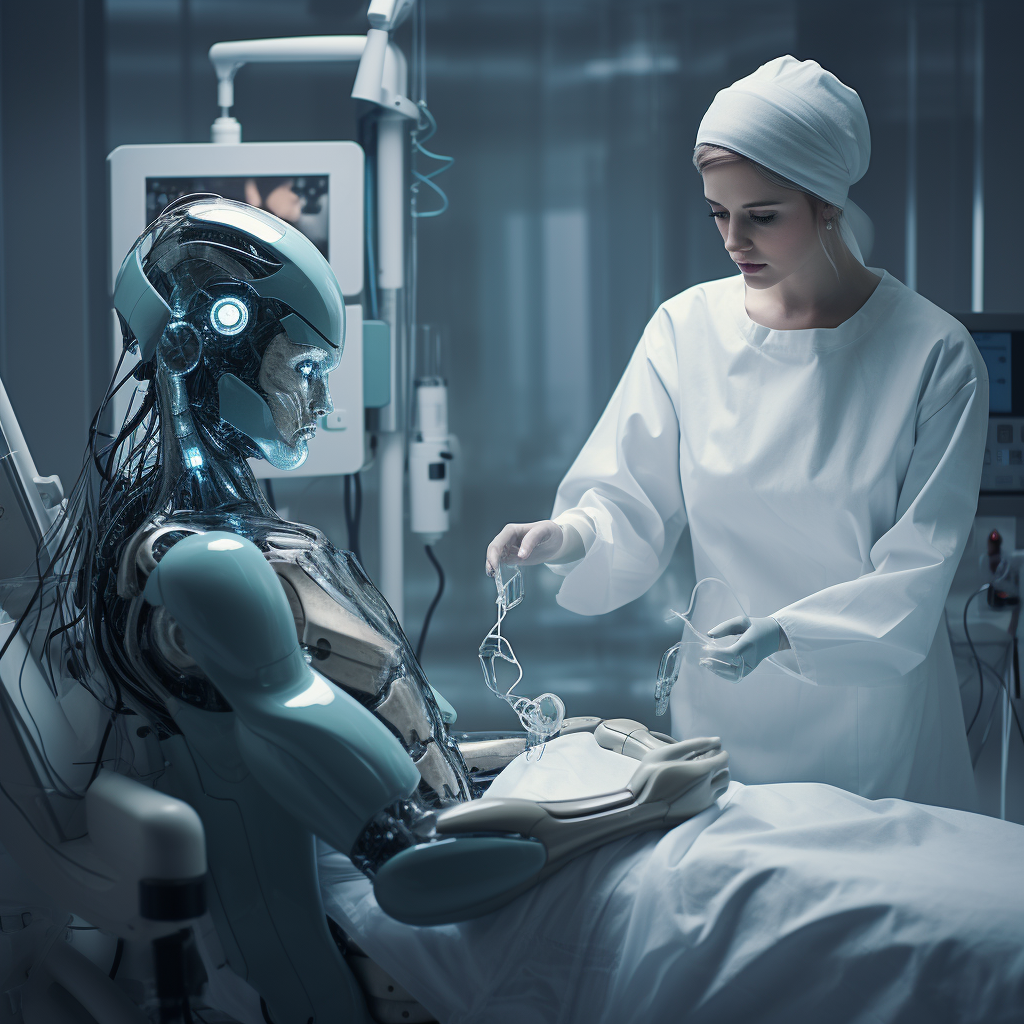
Ethical Dilemma: Can Technology Replace Human Intuition and Compassion?
And herein lies the ethical dilemma that haunts our technological triumphs. Can technology truly replace human intuition and compassion? Is there a point where the machine ends and the human begins, or have we blurred these lines beyond recognition?
This question is not just philosophical but deeply practical, guiding our decisions, our policies, and our very approach to healing. It challenges us to reflect on our values, our beliefs, and our very essence as caregivers and human beings.
The journey of robotic assistants in healthcare is a complex tapestry woven with challenges and limitations that are both tangible and transcendent. It is a narrative that invites us to ponder, to question, to explore the boundaries of technology and the timeless essence of humanity.

As we look to the future, these challenges and limitations will shape not only the landscape of healthcare but our very understanding of what it means to heal, to care, to be human in a world increasingly mediated by machines.
Future Prospects and Global Impact
In the grand tapestry of human history, moments arrive that redefine our relationship with the world. The integration of robotic assistants in healthcare is one such moment, a confluence of technology and compassion that promises to reshape medicine and our understanding of care.
The horizon of healthcare is aglow with the promise of innovation. As robotic technology continues to evolve, so too does its potential to transform medical practice.
Imagine robotic assistants endowed with artificial intelligence, capable of learning and adapting to individual patient needs. Picture a world where robots not only perform surgeries but actively contribute to diagnosis and treatment planning, guided by data and empathy.
But where does innovation lead us? How do we ensure that the pursuit of technological advancement does not overshadow the essential human connection that lies at the heart of healing? The future is a landscape of possibility, but it is also a terrain that demands reflection, ethics, and wisdom.
The dance of robots and humans transcends borders, offering a vision of healthcare that is not confined to the privileged few but accessible to all.
Robotic assistants have the potential to bridge gaps in healthcare delivery, bringing precision and efficiency to regions where resources are scarce. The dream of global health equity is within reach, but it requires a concerted effort, a symphony of collaboration that brings together governments, organizations, and communities.
How do we navigate the complexities of culture, economics, and politics to realize this dream? How do we create a world where the benefits of technology are not a privilege but a right?
Impact on Traditional Roles and Responsibilities of Healthcare Professionals
The arrival of robotic assistants heralds a transformation in the roles and responsibilities of healthcare professionals. Surgeons become conductors, nurses become navigators, guiding a technological ensemble that performs with precision and grace.
This transformation is not without its challenges. How do healthcare professionals adapt to a world where machines are partners, not tools? How do they preserve the essence of care in a landscape altered by technology?
The answers to these questions will shape the future of healthcare, defining not just the practice of medicine but the very meaning of healing.
Historical Connection: How Does This Align with Broader Healthcare Trends?
The integration of robotic assistants is not an isolated phenomenon but part of a broader tapestry of healthcare evolution. It resonates with historical trends that have sought to personalize medicine to make it more patient-centered, more human.
From the ancient healers who recognized the uniqueness of each patient to the modern pursuit of personalized medicine, the journey of healthcare is a narrative of innovation and empathy.
Robotic assistants are the latest chapter in this story, a fusion of technology and compassion that echoes the timeless quest for healing. They are a reflection of our past, a symbol of our present, and a beacon for our future.
The future of robotic assistants in healthcare is a narrative that invites us to dream and to ponder, to envision a world where technology and humanity dance in harmony. It is a journey that challenges us to reflect on ethics, on equity, on the very essence of what it means to care.
As we stand at the cusp of this new era, we are not just witnesses but participants, shaping a future that promises to redefine healthcare and make it more just, compassionate, and human.
Conclusion
In the vast and complex world of healthcare, the emergence of robotic assistants stands as a beacon of innovation and hope. It's a dance of machinery and humanity, a fusion of precision and empathy that redefines medical care's very fabric.
Summarizing the Article's Key Insights
We have traversed a landscape rich with possibilities, exploring the various facets of robotic assistants in healthcare. From their definitions and applications to ethical considerations, from the challenges and limitations to the bright prospects and global impacts, this exploration has uncovered a world where technology and compassion intertwine.
The Potential for Robotic Assistants to Reshape Healthcare
The potential of robotic assistants is not confined to the sterile walls of operating rooms or the intricate circuits of machinery. It extends into the realm of human experience, offering a vision of healthcare that is more precise, more accessible, and more humane.
These robotic marvels are not merely tools but partners in care, extensions of human intention and empathy. They are a testament to our ingenuity and a symbol of our commitment to healing.
Reflecting on the Human Condition: How Do We Balance Technology with Humanity?
As we stand at the cusp of this technological revolution, we are invited to reflect on the human condition. How do we balance the allure of innovation with the essence of compassion? How do we ensure that our pursuit of efficiency does not overshadow our need for empathy?
These are questions without easy answers, dilemmas that challenge us to ponder the nature of care in an age of robots.
As we close this exploration, we are left with a question that resonates beyond the pages of this article, a question that invites us to gaze into the future and ponder the path we are forging:
What does it mean to heal in the age of robotic assistants? How do we embrace the promise of technology without losing the touch of humanity that lies at the heart of care?
The answer to this question is a journey that each of us must embark upon as we navigate the evolving landscape of healthcare. It's a journey that promises to reshape medicine and our understanding of what it means to care, to heal, to be human.
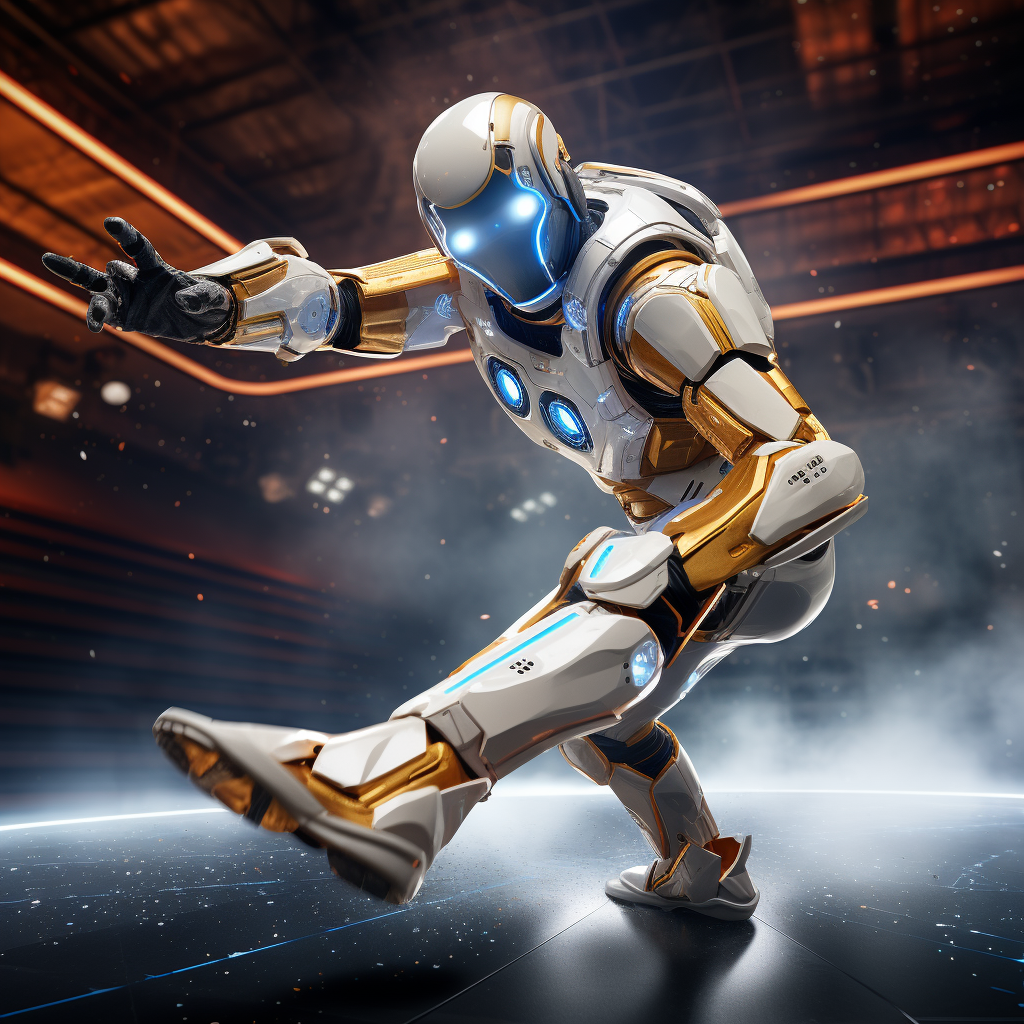
In the dance of robots and humans, in the fusion of technology and compassion, we find a vision of healthcare that transcends boundaries and redefines possibilities. It's a vision that invites us to dream, to reflect, to embrace the future with curiosity and courage.
For in the heart of machinery, we find a reflection of our humanity, a testament to our capacity to innovate, to empathize, to heal.



